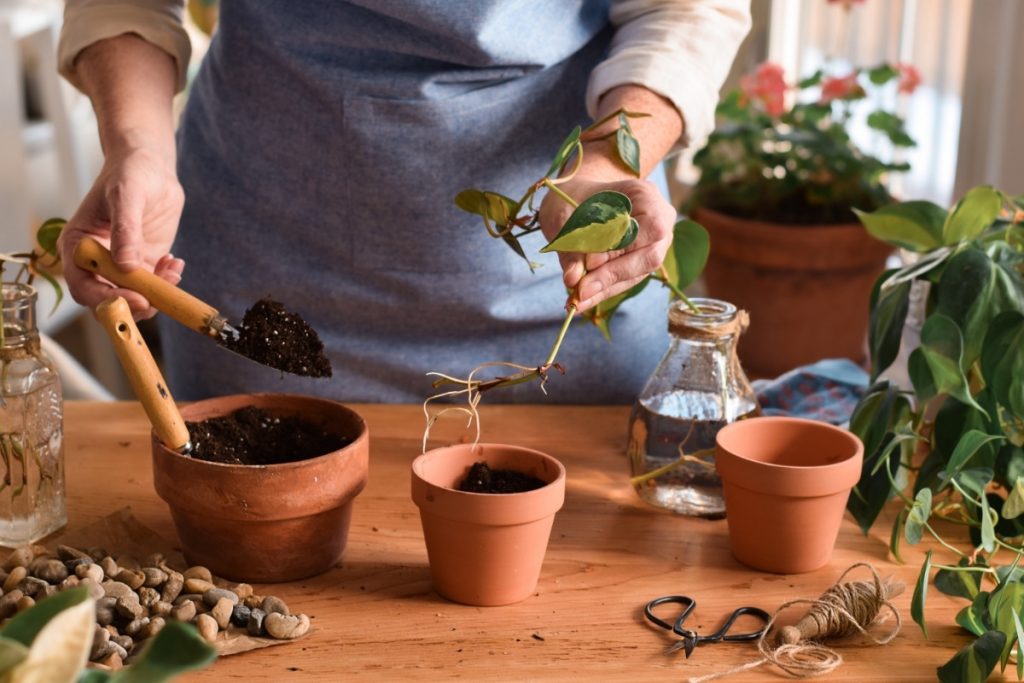Table of Contents
How to Propagate Variegated Plants
You can obtain variegated plants from many sources. If you do not live in a climate that supports such climates, you can try propagation of this kind of plant. However, this process is not easy and you cannot induce it yourself. However, you can obtain plants with this type of coloration from friends or family. You can also pass this kind of plant to friends. This article will provide some valuable tips on how to propagate variegated plants.
Viral mutations
Variegated plants can be inherited maternally or paternally. Some cases of inheritance of variegation are Mendelian, while others are biparental or maternal. The reason for the latter is pollen tube transmission. In some cases, mutable, nuclear genes cause phenotypic changes in plastids, which in turn lead to variegation. The specific mutation that causes variegation is unknown, but is thought to be caused by a virus.
Variegated plants are characterized by a distinct leaf color pattern. Unlike normal leaves, they have two distinct sections – a green one and a white one. These differences are useful for understanding the molecular mechanisms and pathways governing chloroplast development. For instance, ZY-4 leaves have a higher ratio of white sectors compared to ZY-8 leaves. The difference between ZY-4 and ZY-8 leaves could be due to a mutation in one or both of these organelles.
In plants, the genes responsible for variegation are called anthocyanins. Anthocyanins are compounds found in many plants, including blueberries, eggplant, and blackberries. When mutated, anthocyanins take over the natural green color of a plant and make it appear reddish. This can be in the entire leaf or only a part of it.
Sun scorch
Sun scorch is a problem for many plants, but this problem is especially troublesome for variegated plants. Unlike normal leaves, variegated foliage cannot absorb much sunlight, which means it will quickly turn brown or black. The green pigment chlorophyll is found in plant cells and is necessary for photosynthesis. But the green pigment is not always present in the leaves, and the plant may be genetically susceptible to losing it.
It is very important to protect your plants from the damaging effects of sun rays. To protect your plants, mulch the soil and prevent weeds from growing. If you cannot afford mulch, consider building a trellis or arbor to shade the plants. Make sure it is thick enough to cut out the glare from the sun. While transparent plastic may work, burlap will provide better protection from sunlight.
While avoiding sun rays will help protect your plants from sun scorch, you should be mindful of the amount of sunlight they need. Variegated plants are typically weaker than their non-variegated counterparts, so you will need to take extra precautions to protect them. In particular, make sure to keep them out of direct sunlight, which can severely damage them. In addition to blocking the sun from the plant’s leaves, you should also protect them from the harsh winter climate.

Chloroplasts
Chloroplasts in variegated plants are often difficult to characterize because they lack internal membrane structures. Despite the widespread occurrence of plastids, few of their variations have been characterized at the molecular level. A study of the mechanisms of plastid panschization in a mutant plant could shed light on the evolution of plant coloration.
One theory is that the inequalities in chloroplast biogenesis occur early, forming sectors in the mature leaf. Another hypothesis suggests that the redundant gene products in the chloroplasts influence the amount of substrate needed to achieve threshold levels of D1 repair activity. Although these mechanisms seem to be applicable to many variations, hard evidence is required to invoke them. For example, genetic screening for second-site suppressor lines showed that the genes responsible for plastid growth and development also affect chloroplasts.
Several mutations in the plant’s genome also affect chloroplast development. While the chloroplasts in both albino and non-albino cells are identical, some of the mutations in the latter type affect the production of chlorophyll. Here are some examples of mutations in Arabidopsis that cause variegation. One of these genes, called IM, provides a blueprint for the alternative oxidase class of inner mitochondrial membrane proteins.
In a confocal laser-scanning microscopy of chloroplasts in different plants, the green leaf sector was not filled with chlorophyll. In contrast, the yellow sector showed poorly developed plastids and no thylakoid lamellae. Yellow areas of leaves were devoid of starch grains. These differences in leaf coloration were observed in P. Aphrodite subsp. formosana (p. Aphrodite)
EMS
EMS is a chemical used for the induction of variegation in plants. The chemical is applied to metabolically active seedlings or cuttings and allowed to soak for between six and twelve hours. The EM has both teratogenic and carcinogenic effects. In addition, the EM is lethal to plants when inhaled in large doses. The EM treatment is also used to induce variegation in rooted cuttings.
During leaf primordia development, the EMS mutation var3 produces a characteristic yellow-green rosette. In contrast, wild-type plants contain more chloroplasts than EMS-variegated plants. This trait develops early in the leaf development cycle. The EMS mutation disrupts the transmission of retrograde signals to the chloroplasts. Because of this defect, the plant develops a distinct variegated pattern.
The mutations produced by the EMS treatment are called net-striped and zigzag-striped. These leaf mutants are useful in breeding because they have distinct color patterns. The EMS treatment can be applied at different stages of plant development, from seedling to mature plant. However, it is important to note that EMS is only one of several chemicals that can be used in plant breeding. If EMS is applied early enough, it could enhance the quality of the result.
This chemical is applied to hydrated seeds and young seedling roots. It can affect the shape and number of leaves and flowers of the plant. The EMS treatment is not a home remedy for genetic engineering. The chemical mutagen used by commercial plant breeders is ethyl methanesulfonate (EMS), a common amine. The chemical can be applied in any number of plants, including vegetables, flowers, and herbs.
Trimming a plant back to variegation
After pruning, a plant can grow back without displaying its original pattern. Variegation occurs because the chloroplasts of individual leaves vary. Chlorophyll is the substance used by plants to produce sugar through photosynthesis. In plants, a leaf can have more than one type of chloroplast, called a “chimera,” because the green cells are colored by genes that are active in the chloroplasts, and the white cells are colored by genetics.
If the green leaves fade, trimming the plant back to its variegation can bring it back. Variegated plants often revert to their original green color after insufficient light. However, they can still be kept as houseplants, as they don’t require much light. They only need eight to twelve hours of indirect sunlight each day, which is sufficient for indoor plants. They also don’t require very high or low temperatures and don’t have many demands. As long as they get adequate amounts of light and are kept at the right temperature, variegation can be maintained.
Variegated ginger only blooms on old growth. Therefore, it is important to remove flower stalks and leaves at the base of the plant to promote new blooming. You should also cut back any new leaves and shoots to maintain the desired shape of the plant. The stem and branches should be pruned so that they don’t cross with the main stem of the plant. A plant with more chlorophyll is more efficient at harvesting solar energy.
EMS as a mutagen
EMS has been widely used in plant breeding to enhance genetic diversity. It is a nonheritable mutagen that produces randomly distributed point mutations, and thus has limited lethality. In earlier studies, it was used in the mutagenesis process known as saturation mutagenesis, and a single-mutation effect was observed. Although EMS does not show lethality in plants, it was used heavily in Arabidopsis.
Mutagenesis breeding can be very valuable for creating new cultivars and extending the genetic pool for hybridization. The EMS and caffeine treatments of four species of Silene resulted in the emergence of a variety of mutants. However, caffeine alone increased seed vigor in S. floscuculi, while caffeine alone improved seed vigor in S. chalcedonica. EMS and caffeine should be further investigated as mutagens in plant breeding.
The effectiveness of EMS was determined by its ability to induce chlorophyll mutations in variegated seedlings. Seedlings from fourteen different families showed EMS-induced chlorophyll mutations. All were dead except for the two mutants in one family. The control seeds underwent the same treatments but were exposed to the same conditions. However, the seeds that were untreated received EMS treatment as control.
Chemicals used to induce variegation have many risks. It can disrupt a plant’s energy production system. It is therefore best used in fume cupboards in a lab with appropriate personal protective equipment. EMS is not considered safe for human use, so it is crucial that it is only used in laboratories and under appropriate conditions. A high-energy electromagnetic field of radiation can be harmful to plant growth.


